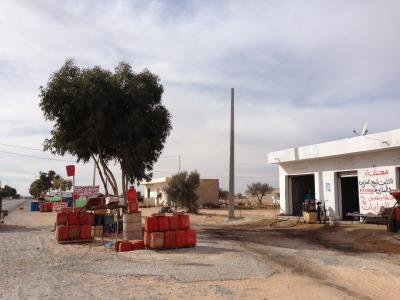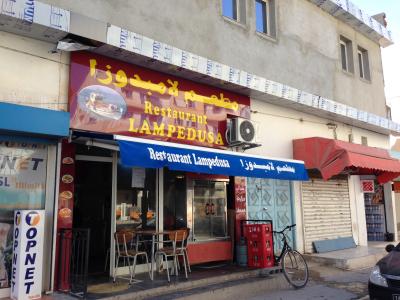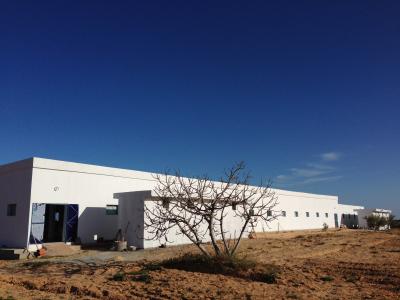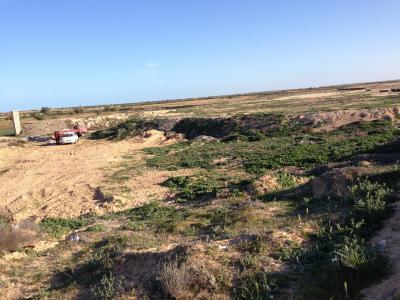The Migration Borderscape of South East Tunisia: Memories from a North African ‘Triple Frontier’
Posted:
Time to read:
Guest post by Paolo Cuttitta, Researcher at VU University Amsterdam, Faculty of Law. Paolo carries out his research activities at VU within the project ‘The Human Costs of Border Control’. He investigates on the processes of delocalization and denationalization in the Euro-African border regime, particularly in the Southern Central Mediterranean.
On 2 July 2016, thirteen Tunisian migrants died in a shipwreck off the Libyan coast, while eleven others were rescued. Their trawler had left from the Libyan town of Sabratha, 100 km east of the Tunisian border, and was heading to Italy.

The 2nd July shipwreck further draws our attention to the western side of the Tunisian-Libyan borderlands. Indeed, all Tunisians involved in the shipwreck came from the governorate of Médenine, the coastal region bordering on Libya: one was from Zarzis (the main harbour) and the rest came from Ben Guerdane (the town closest to the border).
The fieldwork I carried out there in February this year was focused on humanitarian non-state actors of migration management but it also gave me a wider insight into the ‘borderness’ of the region in general (i.e. the ensemble of characteristics that turn a place into a border).

Secondly, hundreds of thousands of refugees fleeing the 2011 Libyan war crossed the border to seek protection in Tunisia that year. Most of them were Sub-Saharans, who were hosted in the Choucha refugee camp, next to Ben Guerdane. Choucha was closed by UNHCR in 2013, following pressure from the Tunisian government, which was eager to get rid of the unwanted guests. Refugees were offered up to 1,500 Euros each to return home, but many used the money to cross the Libyan border to try to reach Italy. Around 60 rejected asylum seekers, a number of undocumented migrants, as well as a few hundred refugees who never left Tunisia, still lived in the governorate of Médenine in February.
Thirdly, the region has become home to the rescapés (the rescued). Zarzis and Ben Guerdane have recently become the main arrival points for the shipwrecked (931 in 2015) who failed to cross from Libya to Italy and were rescued at sea by Tunisian fishermen or the Tunisian National Guard. One of the rescapés I met during my fieldwork had tried to cross from Zuwara three times between 2014 and 2015.
Last but not least, the more recent Libyan crisis pushed over a million Libyans to cross the border and seek refuge in Tunisia. They are de facto allowed to stay but are not granted state assistance, nor access to the UNHCR asylum procedure, because the Tunisian government doesn’t want to compromise relations with its Libyan counterpart.
The well-being of migrants from Libya and Sub-Saharan countries is of least concern to a government that is struggling with the economic crisis, the discontent of the increasing numbers of unemployed and the terrorist threat fuelled by Libyan cells of the Islamic State (IS). Importantly, these elements are interlinked. The 2015 attacks at the Bardo Museum and in Sousse were directed against European tourists, resulting in heavy losses for tourism, which is the main industry of the city of Zarzis. Moreover, the (mostly informal) border economy of Ben Guerdane was gravely affected by the frequent closings of the border and by increased controls on smuggling (however, the crucial activity of petrol smuggling continues undisturbed). The economic crisis and the few available options in the job market end up pushing many young people either to emigrate or to join the IS. The latter, finally, fuels the Libyan civil war, which causes many Libyans to flee to Tunisia and many Sub-Saharans to attempt the sea crossing to Europe in search of a better life.
Thus, while tourists have become scarce in the Zarzis region, migrants keep crossing the land and sea borders, and innumerable checkpoints against jihadists are scattered on all main roads. The most imposing anti-terrorist measure, however, is the 200 km long border barrier completed in February this year, consisting of a sand embankment and a trench. It is the low-tech part of a hi-tech surveillance system that is being established at Tunisian land borders with US and German support. Only one month later, Libyan-trained Tunisian IS fighters launched an attack on Ben Guerdane. Fifty-three people died in shootings with the military.
Against this context, Tunisian authorities do not look at migrants and refugees with a favourable eye. While the law against human trafficking has just been adopted, there is little hope for the long awaited asylum law. In general, conditions for all categories of migrants and refugees remain extremely poor. Nationals from many countries are not allowed to apply for asylum, while those who do and whose applications are rejected are not even informed about their right to appeal. The burden of assistance thus falls on humanitarian non-state actors, who try to cooperate with one another, despite their (sometimes very) different agendas, approaches and degrees of autonomy from state authorities. Interestingly, cooperation between NGOs also enhances trans-border mobility and increases the ‘borderness’ of the Tunisian side of the borderlands. Indeed, since foreign NGO workers had to leave Libya, NGOs such as MSF and ICRC have been providing training (e.g. in search and rescue at sea and the treatment of corpses) in Zarzis not only to Tunisian but also to Libyan fishermen associations and other NGOs.

While the management of shipwreck survivors is a profiting business in the region, only local volunteers care about the bodies of those who did not survive. Several representatives from relief agencies told me that, following a mass grave burial of Syrians in Ben Guerdane in 2014, another place was found near Zarzis to bury the victims of the 2015 shipwrecks “individually” and “more humanely”. I visited the new site only to find out that it was just another mass grave in the middle of nowhere. The volunteer who brought me there admitted: “Around eighty people are buried here. The last time I came, the wind had blown some sand away, and there were bones popping out. Luckily, I managed to cover them”.

On the western side of this North African ‘triple frontier’ between Tunisia, Libya and Europe, old and new border relations and technologies, along with both security and humanitarian discourses and practices, contribute to multifarious processes of border making. These are carried out by different subjects: Tunisian and Sub-Saharan migrants; IS fighters; Libyan refugees; Tunisian petrol smugglers; Tunisian, Libyan and international humanitarian workers; Tunisian authorities, fishermen and private citizens; dead and alive shipwrecked. Different actors and rationalities contribute to determine the high degree of ‘borderness’ of this region, the multiple colours and nuances of this pluridimensional Tunisian borderscape, rooted in the desert and anchored in the sea, suspended between Libya, Sub-Saharan Africa and Europe.
Any comments about this post? Get in touch with us! Send us an email, or post a comment here or on Facebook. You can also tweet us.
Share:








